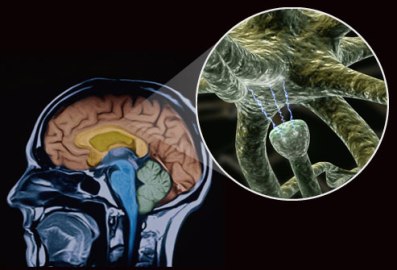How Antidepressants Work
Antidepressants are the first line treatment against depression. Annual sales of antidepressants are approximately $ 50 billion, making this class of drugs one of the most currently prescribed. Many pharmaceutical companies engaged in direct marketing of antidepressants to consumers through television and print media.
Thus, patients have a major influence on prescribing patterns of health professionals when it comes to this type of medication. Antidepressants are often prescribed, but after all, what exactly are antidepressants? How do they work? Are they effective?
Important!
This article is informational only, and is not intended as medical advice. People who are in search of assistance to obtain diagnosis and treatment of depression should consult their physician and / or pharmacist.
The depression or major depressive disorder – TDM, also called clinical depression or unipolar depression – occurs in about 15 million Americans each year. It can occur at any age (including children under 5 years), but most commonly affects people between 25-44 years. MDD affects approximately 20% of women and 10% of men. TDM leads to lost productivity at work and school. And most importantly, is the leading cause of suicide.
The TDM, unlike the short periods of “melancholy” is a persistent change in mood that can interfere with family relationships and self-esteem. Recurrent episodes can last for days, months or years. The TDM has physical and mental symptoms, which include:
- depressed mood (sadness)
- loss of interest or pleasure
- sleep disruption
- fatigue
- feelings of worthlessness, despair, hopelessness and helplessness
- changes in appetite, weight loss or weight gain
- loss of sexual interest
- inability to think, concentrate or make decisions
To have a clinical diagnosis of MDD, these symptoms should occur frequently for a minimum period of two weeks.
These symptoms can also result from other diseases such as hypertension, diabetes, heart disease and epilepsy. So it is possible that the depressive episode is a secondary symptom of another disease. Since there is no laboratory test for depression, doctors may perform several tests to rule out these other possible diseases. If all these are excluded, remains the TDM.
How Antidepressants Work
Antidepressants are designed to block various aspects of the process of synaptic transmission in neurons that contain serotonin, norepinephrine and dopamine in the brain and thus increase the levels of these neurotransmitters. With the increase in neurotransmitter levels, mood and emotions should stabilize and perhaps return to normal. However, since some of these neurotransmitters (such as norepinephrine) are contained in the neural pathways in the brain and other parts of the nervous system, some antidepressants may have side effects as changes in blood pressure and saliva production. Furthermore, as the pathways involved in TDM is at the bottom of the brain and brain stem, antidepressants may interfere with other functions such as appetite, sleep and sexual function.
Antidepressants are classified according to the neurotransmitters that affect and how they affect. Let’s examine the different types of antidepressants.
Selective reuptake inhibitors (SSRI)
SSRIs, antidepressants prescribed most often were introduced in the mid 80s. SSRIs block serotonin transport back to the pre-synaptic cell. This action increases the concentration of serotonin in the synaptic cleft, raising the stimulation of postsynaptic cells. SSRIs include the following drugs:
- Fluoxetine (Prozac)
- Paroxetine (Paxil)
- Sertraline (Zoloft)
- Fluvoxamine (Luvox)
- Citalopram (Celexa)
- Escitalopram (Lexapro)
The various SSRIs are equally effective and tolerated by patients. However, one reacts the same way, therefore, some patients may suffer more side effects of a type other than with SSRIs. Most antidepressant is administered more than once a day. But the active form of fluoxetine in the body have long half-life (stays longer) and, therefore, patients can take it once a day – minimizing the risk of forgetting a dose. At high doses, paroxetine and sertraline interfere with the neurotransmission of dopamine and serotonin.
To reduce the side effects that may cause the patient to discontinue the drug, doctors usually begin SSRIs at low doses and slowly increase until the desired dose. Side effects include nausea, dizziness, dizziness, vomiting, insomnia, anorexia, anxiety and sexual dysfunction.
Tricyclic antidepressants and selective reuptake inhibitors of norepinephrine
Tricyclic antidepressants have been introduced in the late 50th and early 60th. Like the SSRIs, these compounds block the reuptake of norepinephrine by the presynaptic cell, thereby increasing its concentration in the synaptic cleft. Tricyclic antidepressants include:
- Nortriptyline (Pamelor)
- Maprotiline (Ludiomil)
- Desipramine (Norpramine)
- Amitriptyline (Elavil)
- Clomipramine (Anafranil)
- Imipramine (Tofranil)
Tricyclic antidepressants affect heart rate and blood pressure, because norepinephrine is also a neurotransmitter used by the autonomic nervous system that controls blood pressure and heart rate. Its side effects include postural hypotension (blood pressure below normal), tachycardia (rapid heartbeat), dry mouth, urinary retention and blurred vision. Tricyclic antidepressants are not used frequently because they have many side effects. However, for patients who can not tolerate SSRIs or other antidepressants, tricyclics are effective. Physicians should observe the patient closely to monitor the appearance of serious side effects.






0 Comments
You can be the first one to leave a comment.